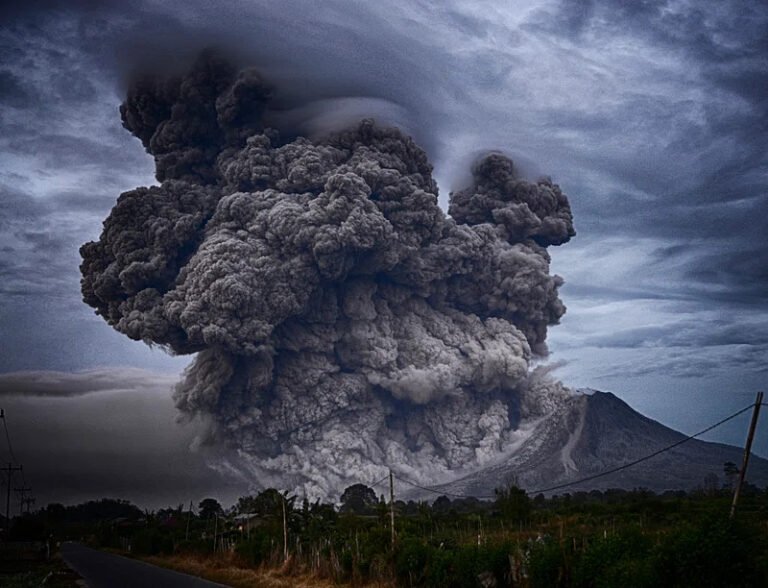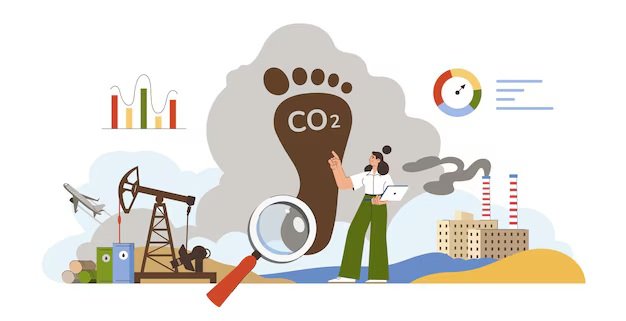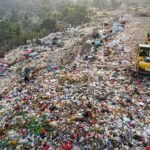10 Environmental Books for Young Adults to Read This Year
A younger generation of aspiring environmental activists is emerging, and if you are one of the passionate young minds who wants to make a difference, we have a list of interesting environmental books for you. Books are powerful tools for creative minds—reading one can influence personal decisions, and the ones we have listed in this guide will inspire you to take action and create change.
Spending ample time reading the right book can ignite ideas and inspire dreams to address some of the pressing issues we face today. Climate change remains a global emergency, and swift responses are required now more than ever to promote sustainable solutions for a better future. We have listed ten must-read environmental books written by passionate, eco-minded individuals who share a vision for sustainability.

In This Article
- The Importance of Environmental Books for Young Adults
- 10 Environmental Books for Young Adults to Read This Year
- #1. If Not Us – Written by Mark Smith
- #2. How to Change Everything – Written by Naomi Klein
- #3. Losing Earth: A Recent History –Written by Nathaniel Rich
- #4. Silent Spring –Written by Rachel Carson
- #5. This One Is Ours –Written By Kate O’Donnell
- #6. Burning Sunlight –Written by Anthea Simmons
- #7. Bringing Back Our Oceans –Written by Hand, Carol
- #8 Bringing Back Our Wetlands –Written by Laura Pardew
- #9. Green Rising –Written by Lauren James
- #10. No One Is Too Small Too Small to Make a Difference –Written by Greta Thunberg
- Reader Reviews and Testimonials
- Real-World Connections
- Multimedia Enhancements
- Recommendations
- Conclusion
The Importance of Environmental Books for Young Adults
Sustainability goals for a greener future lie in the hands of the younger generation. The future of our environment is more than just a topic—it’s the reality facing the next generation. With recent weather events linked to climate change and other pressing environmental issues affecting our planet, young adults are increasingly involved in global movements to promote sustainability.
According to a 2024 study by Sustainable Earth Reviews, about 81% of Generation Z (Gen Z) are concerned about the environment. An expert report published by the United Nations Environmental Programme (UNEP) also found that environmental education can increase youth participation in sustainability efforts by 45%.
Experts such as Dr Heidi Roop, a climate scientist and educator at the University of Minnesota and Richard Louv, an environmental advocate and author of “Last Child in the Woods, have spoken extensively about the role of nature literature in cultivating a sense of stewardship and empathy for the planet and empowering young adults to become change-makers—not just about educating them. Books that frame these issues within relatable contexts are vital for motivating future generations to engage in environmental protection and activism.
10 Environmental Books for Young Adults to Read This Year
#1. If Not Us – Written by Mark Smith
Recommended Age: 14 and above
Themes: Climate activism, personal responsibility, environmental justice
If Not Us is an engaging book that tells the story of Hesse, a seventeen-year-old living in a small coastal town where coal mining and a power station contribute to environmental degradation. While Hesse’s mother is part of a local group working to close the coal mine, he is more interested in surfing than supporting sustainability goals. As the effects of climate change worsen in his town, Hesse must soon decide whether it’s time to take action to protect his community.
Why This Book Matters
“If Not Us” illustrates how indifference towards environmental issues can turn into activism. Hesse’s journey reflects the situation of many young adults today. While they may not initially see themselves as activists, they may soon realise the impact their actions can have on the environment. This novel explores the tension between personal enjoyment and communal responsibility.
Takeaways
The book encourages young readers to think critically about their role in the fight against climate change. Smith’s work demonstrates that activism is not always a predetermined path but something individuals grow into as they learn more about environmental issues.
#2. How to Change Everything – Written by Naomi Klein
Recommended Age: 12 and above
Themes: Climate crisis, environmental policy, youth activism
How to Change Everything is a handbook authored by award-winning activist and journalist Naomi Klein. This book is for young minds who are passionate about tackling climate change. Klein’s work discusses the realities of extreme weather events, how climate change affects marginalised communities, and what young environmental activists can do to drive change.
Why This Book Matters
Klein is widely recognised for her works in environmental circles, and this handbook serves as a tool to inspire young readers to get involved. “How to Change Everything” focuses on the primary causes of climate change. It discusses capitalism and industrialisation. Most importantly, it equips young readers with the knowledge they need to make a difference. Klein also highlights the work of youth activists like Greta Thunberg, demonstrating how young voices are leading the push for sustainability.
Takeaways
Young readers will surely be inspired to start their journey in climate change activism. Klein’s work emphasises that real change comes from collective actions and the younger generation has an essential role to play in ensuring a greener future.
Learn More: 10 Innovative Eco-Friendly Projects for Students to Lead a Sustainable Future
#3. Losing Earth: A Recent History –Written by Nathaniel Rich
Recommended Age: 16 and above
Themes: Fossil fuel industry, environmental policy, historical perspective
Losing Earth, written by Nathaniel Rich, highlights the critical decade from 1979 to 1989 when activists, politicians, and scientists came close to stopping the climate crisis before it spiralled out of control. Rich explains how the world was on the verge of implementing policies that could have mitigated the impact of climate change.
Why This Book Matters
“Losing Earth” offers a historical perspective on the missed opportunities to combat climate change. It serves as a cautionary tale for younger generations, guiding them toward a deeper understanding of the systemic challenges that delay and obstruct environmental progress.
Takeaways
Nathaniel Rich’s work reminds readers of the importance of informed activism. By understanding how corporate greed and misinformation stall environmental policy, younger generations can advocate more effectively for transparency and action.
#4. Silent Spring –Written by Rachel Carson
Recommended Age: 14 and above
Themes: Environmentalism, pesticide use, ecological impact
First published in 1962, just two years before Rachel Carson’s death, Silent Spring focuses on the dangers of pesticides, specifically DDT (dichloro-diphenyl-trichloroethane), and their impact on wildlife. Carson, a conservationist, played a pivotal role in leading to the ban of DDT in the United States and the establishment of the U.S. Environmental Protection Agency (EPA).
Why This Book Matters
Silent Spring is an essential read for young minds seeking to understand the environmental impact of synthetic pesticides. Carson’s ability to weave scientific research with storytelling makes this a timeless book for aspiring young environmentalists.
Takeaways
Carson’s work teaches young readers the roots of environmental activism and how it begins with individual action. Silent Spring demonstrates the power of one voice to create lasting change, making it a must-read for passionate, aspiring activists.
#5. This One Is Ours –Written By Kate O’Donnell
Recommended Age: 14 and above
Themes: Environmental awareness, personal growth, artistic expression
This book follows the journey of sixteen-year-old Sofie, who travels to Paris with high hopes of exploring the beautiful city. However, to her disappointment, Paris is not as she had imagined. Sofie soon realises that the world works differently than she thought and begins to question the role of art, beauty, and the environmental challenges society faces.
Why This Book Matters
This One Is Ours is a compelling novel that encourages young readers to think critically about their view of the world and how environmental issues intersect with art, culture, and personal identity. O’Donnell introduces the idea that environmentalism isn’t just about science but also about how we perceive the world through creativity and self-expression.
Takeaways
O’Donnell’s story inspires young minds to find their own way of contributing to environmentalism—whether through art, activism, or writing, everyone has a role to play in promoting sustainability goals.
#6. Burning Sunlight –Written by Anthea Simmons
Recommended Age: 12 and above
Themes: Climate change, cross-cultural collaboration, activism
Burning Sunlight tells the story of Zaynab, a girl from Somaliland, and Lucas, a boy from Devon. Despite their differences, Lucas and Zaynab create a Fridays for Future group, educating local communities and protesting environmental injustice.
Why This Book Matters
Anthea Simmons’ Burning Sunlight explores the deep connection between environmentalism and social justice, highlighting how climate change affects regions like Somaliland. The story emphasises the importance of global cooperation in addressing climate change. Simmons’ Burning Sunlight is an excellent book for young minds passionate about environmental and human rights issues.
Takeaways
Anthea Simmons’ work showcases the power of grassroots activism. It’s a book that will inspire young readers to think globally and implement actionable steps locally, building partnerships beyond borders.
#7. Bringing Back Our Oceans –Written by Hand, Carol
Recommended Age: 10 and above
Themes: Ocean conservation, plastic pollution, marine biodiversity
“Bringing Back Our Oceans” addresses one of the most pressing environmental challenges today—plastic pollution in the ocean. This book highlights the severity of plastic pollution and inspires young readers with practical steps to promote ocean conservation.
Why This Book Matters
In addition to discussing plastic pollution, Carol Hand provides a comprehensive overview of the environmental impact of overfishing. The book encourages young minds to reduce plastic use, promote sustainable fisheries, and advocate for ocean-friendly policies.
Takeaway
By reading this book, young readers will understand that protecting the ocean is a collective responsibility. Carol’s work inspires action, demonstrating how communities and individual efforts can contribute to restoring marine biodiversity.
Learn More: 10 Sustainable Food Practices Examples: A Comprehensive Guide to Green Living
#8 Bringing Back Our Wetlands –Written by Laura Pardew
Recommended Age: 10 and above
Themes: Wetland conservation, ecosystem restoration, environmental education
Laura Pardew’s Bringing Back Our Wetlands is an engaging book that highlights the environmental importance of wetlands and their role in maintaining biodiversity and preventing floods. It discusses how we are losing wetlands at an alarming rate and offers actionable measures to prevent further damage.
Why This Book Matters
Wetlands are environmentally significant as they play a crucial role in creating a sustainable planet. This book educates young readers about the importance of these ecosystems and why we must protect them.
Takeaways
Bringing Back Our Wetlands offers practical tips on how communities and individuals can help preserve these vital ecosystems.
#9. Green Rising –Written by Lauren James
Recommended Age: 14 and above
Themes: Climate change, supernatural abilities, youth empowerment
This sci-fi-inspired novel is set in a near-future world on the brink of ecological catastrophe. In the book, teens across the globe develop the supernatural ability to grow plants from their skin—a new power they use to combat environmental destruction. Green Rising follows three teenagers, Hester, Gabrielle, and Theo, whose main goal is to promote sustainability by working together to harness the potential of their abilities.
Why This Book Matters
While the story is fictional, Green Rising connects deeply with real-world issues such as deforestation, species extinction, and climate activism. This sci-fi novel demonstrates the strength of youth movements and the power of collective action.
Takeaways
Focusing on the supernatural abilities of the three teens, this novel will captivate young adults. Aspiring environmental activists will be inspired to think creatively about solutions to our current environmental problems.
#10. No One Is Too Small Too Small to Make a Difference –Written by Greta Thunberg
Recommended Age: 12 and above
Themes: Climate activism, youth empowerment, social change
No One Is Too Small to Make a Difference is a work by Swedish environmental activist Greta Thunberg. Published in 2019, the book is a collection of Thunberg’s most impactful speeches, which helped drive a global movement for climate action. Thunberg’s School Strike for Climate inspired millions of young people around the world to demand action from governments on climate change.
Why This Book Matters
At a young age, Greta Thunberg made the world listen to her voice. Her unwavering commitment to sustainability demonstrates how young people can play a crucial role in shaping a sustainable future.
Takeaways
No One Is Too Small to Make a Difference highlights that no one is too young to make a meaningful impact. This book serves as a powerful call for youth empowerment in the face of the global environmental crisis.
Reader Reviews and Testimonials
One of the most interesting aspects of environmental literature is its ability to resonate with readers. Here, we look at a few testimonials from young minds who were influenced by these books:
- Lucas, age 14: “Naomi Klein’s How to Change Everything made me feel like I could make a real difference. It opened my eyes to the urgency of climate change, but also gave me hope that young people can change the world.”
- Emma, age 16: “I read If Not Us, and it completely changed the way I think about climate change. I realized that even small actions, like reducing my energy use, can make a difference. I’m now more involved in my school’s environmental club and even helped organize a local climate strike.”
Authors’ Insight and Context
A better understanding of the motivations behind the authors of these exceptional works can help readers develop a deeper connection to these books. Let’s look at the context and insight from some of the authors.
- Naomi Klein (How to Change Everything): “Climate change is the fight of our generation, and it’s a battle that young people must lead. This book is not just a guide, but a call to arms for those who feel powerless. The truth is, no one is too small to make a difference.”
- Mark Smith (If Not Us): “I wanted to write a story that captured the emotional and ethical struggle that many young people face today regarding the environment. It’s easy to ignore these issues when they don’t feel immediate, but I hope Hesse’s journey inspires young readers to reconsider their place in this fight.”
Real-World Connections
Environmental books for young adults create a deep connection between literature and real-world situations. For example, reading Carol Hand’s Bringing Back Our Ocean can inspire young students to take action in the real world by participating in local beach clean-ups.
In the case of Anthea Simmons’ Burning Sunlight, young readers can relate to real-world movements like Fridays for Future—an initiative that has mobilised millions of young people globally to protest governmental inaction on climate change.
| Interactive Element | Description | Suggested Book |
| Classroom Debate | Organize a debate on whether individual actions can make a significant difference in combating climate change. | If Not Us |
| Book Club Discussion Questions | Create a list of discussion questions focusing on the role of youth in environmental activism. | How to Change Everything |
| Ecosystem Mapping Project | Have readers map out a local ecosystem and analyse its health. | Bringing Back Our Wetlands |
| Letter to Government Officials | Encourage readers to write letters advocating for environmental policies to local government representatives. | No One Is Too Small to Make a Difference |
| Creative Art Expression | Invite readers to create art that reflects the themes of environmental destruction or sustainability. | This One Is Ours |
| Sustainable Practices Challenge | Encourage readers to adopt one sustainable practice for a week and document their experience. | Silent Spring |
Multimedia Enhancements
Integrating multimedia resources with literature enhances the reader’s experience. Here are other ways readers can further engage with these interesting environmental books.
- Documentaries:
After reading Silent Spring, readers might watch the PBS documentary Rachel Carson, which provides a deeper look into her life and the pesticide crisis she uncovered. - TED Talks:
Naomi Klein’s TED Talk on capitalism and climate change serves as an excellent supplement to How to Change Everything, offering a more direct insight into her advocacy for systemic change. - Podcasts:
No One Is Too Small to Make a Difference can be paired with episodes from the Outrage + Optimism podcast, which discusses youth activism and climate leadership in-depth.
Recommendations
While these books will motivate young readers who are passionate about environmental sustainability goals, they can also explore:
- The Uninhabitable Earth by David Wallace-Wells: A deep evaluation of the catastrophic consequences of climate change if the current trends continue. This book is more scientific but is written in a manner that young adults will easily understand.
- The Sixth Extinction by Elizabeth Kolbert: A Pulitzer Prize-winning work that closely observes how human activity is accelerating the rate of species extinction.
- Braiding Sweetgrass by Robin Wall Kimmerer: A unique blend of indigenous wisdom and scientific knowledge, offering insights into the symbiotic relationship between humans and nature.
Conclusion
The environmental books listed in this guide are written to encourage and inspire the younger generation. Sustainability goals for the future should be prioritised, as predictions are not promising. Spending ample time reading the right book can ignite ideas and inspire dreams to address some of the pressing issues we face in our world today. Climate change remains a global emergency, and swift responses are required now more than ever to promote sustainable ideas for a better future.
From understanding the historical roots of environmental movements to engaging in grassroots activism, these books not only educate and inspire young readers but also challenge them to take action in their own lives. Whether it’s reducing plastic use, advocating for policy change, or joining global climate strikes, every young person has the power to make a difference.
These books can be found online or at your local bookstore.







